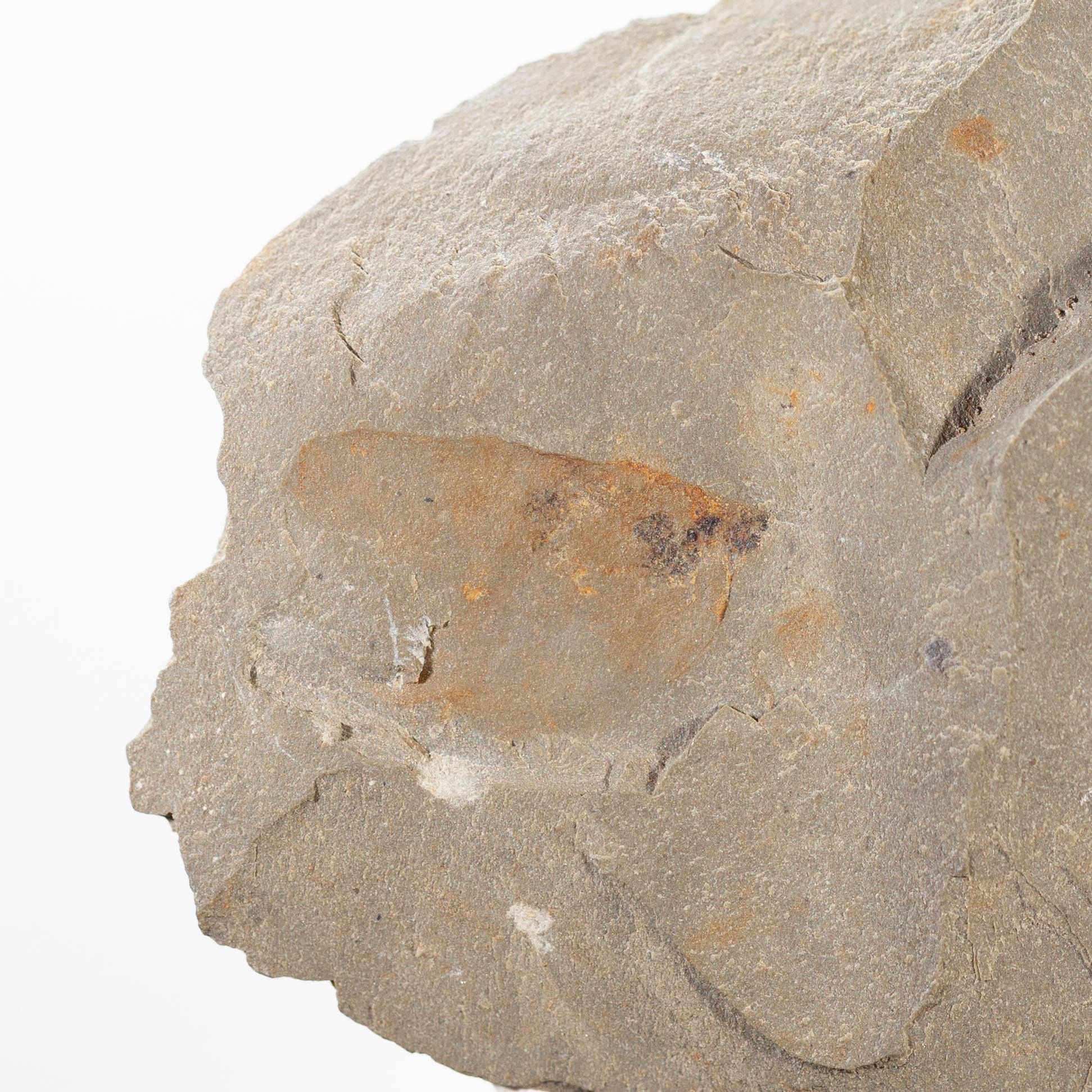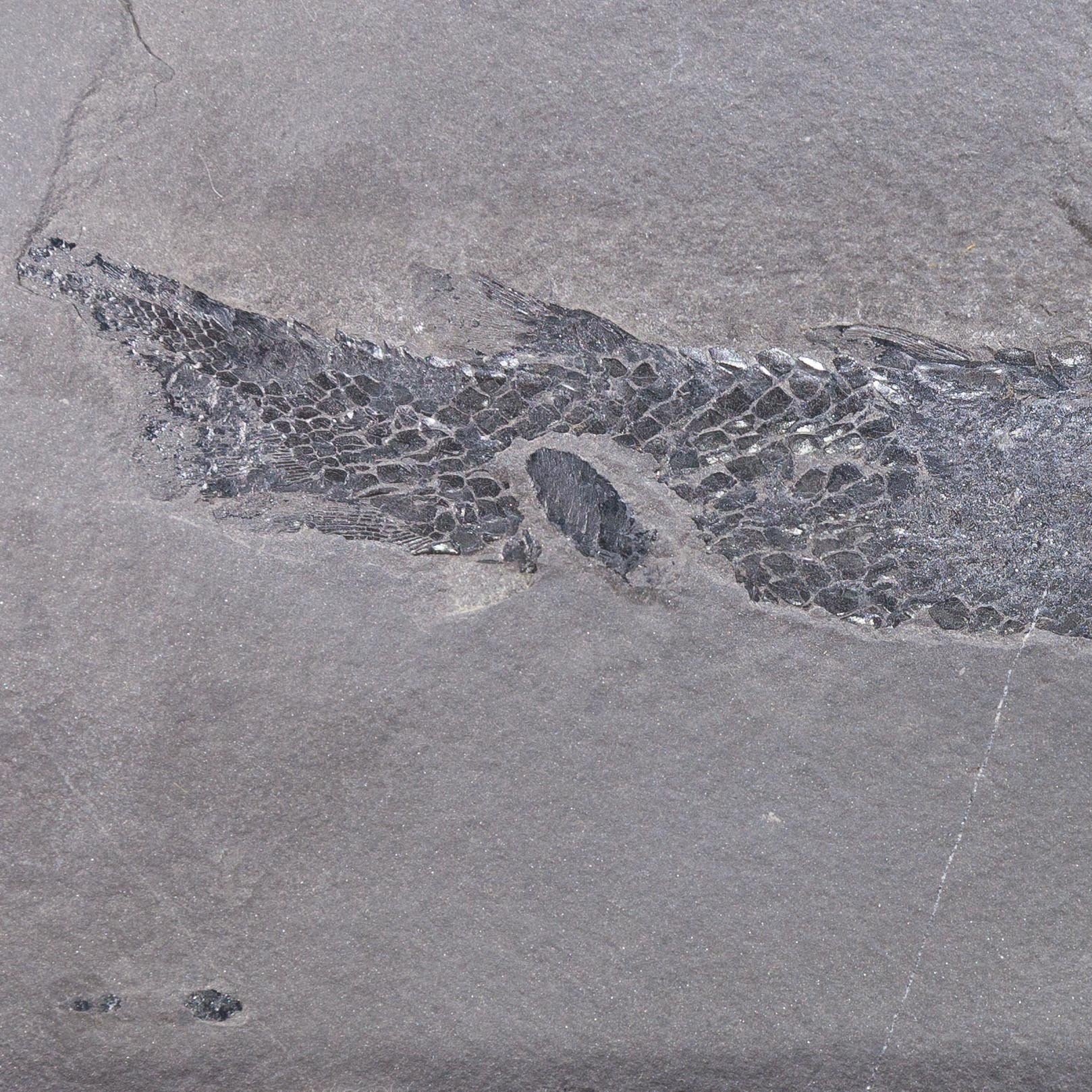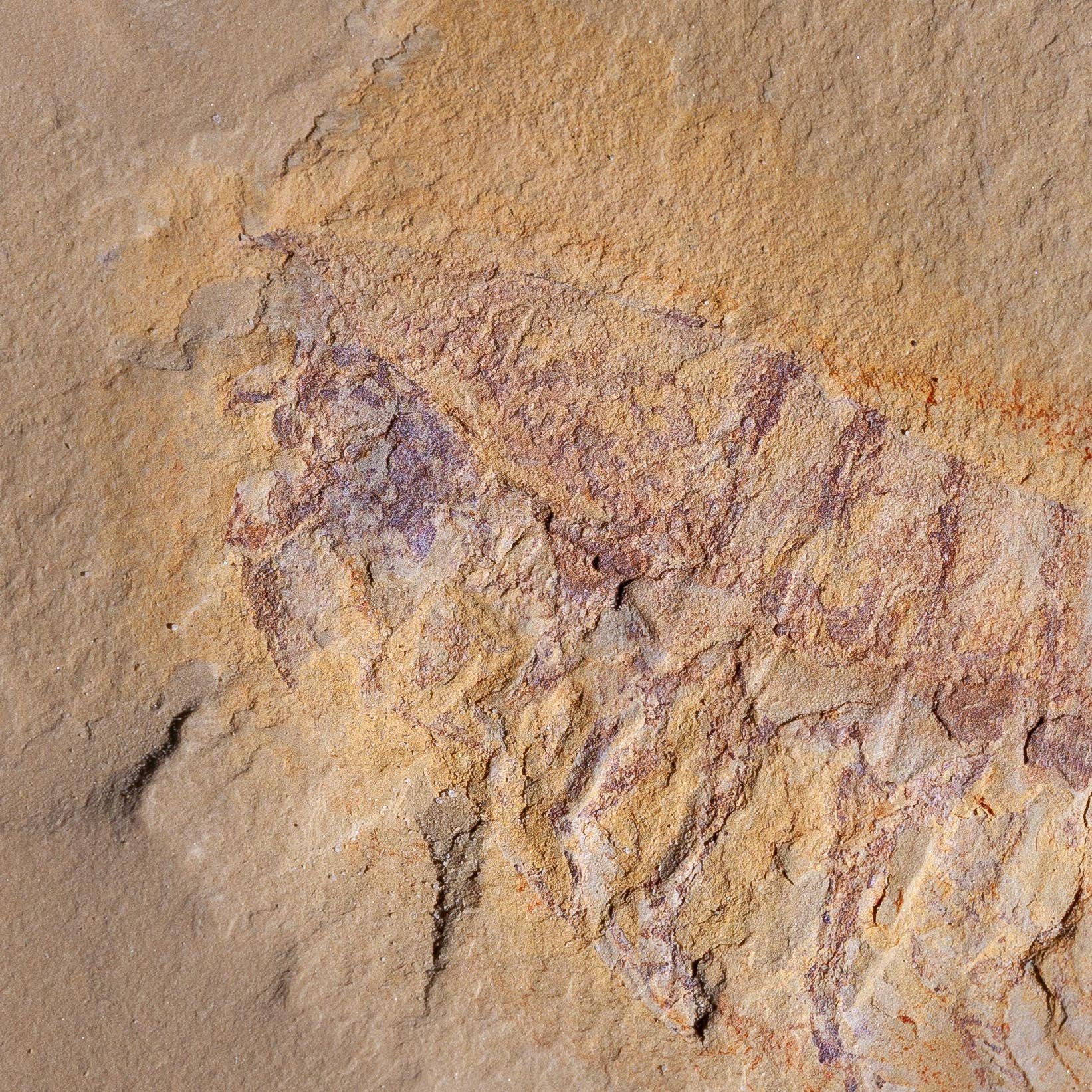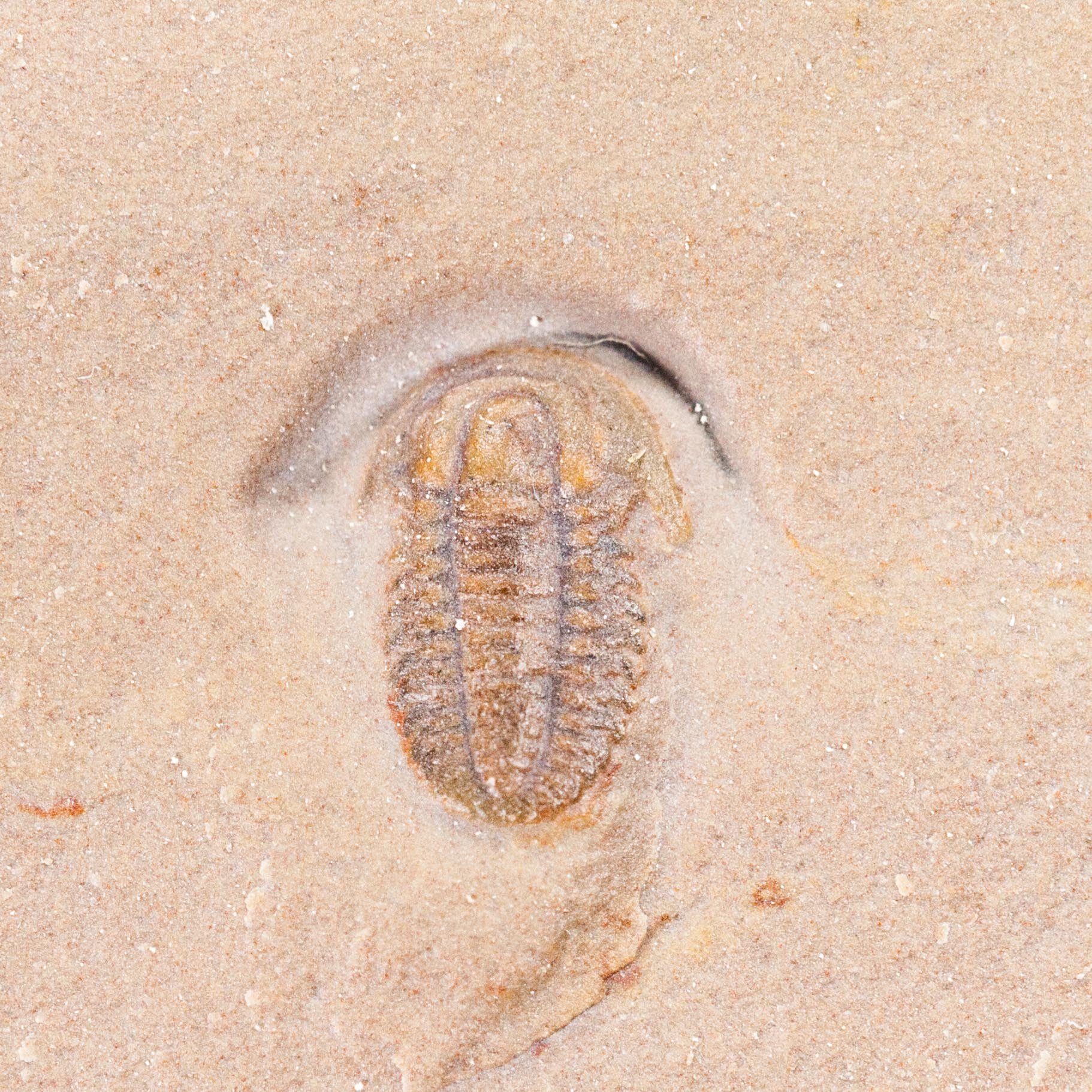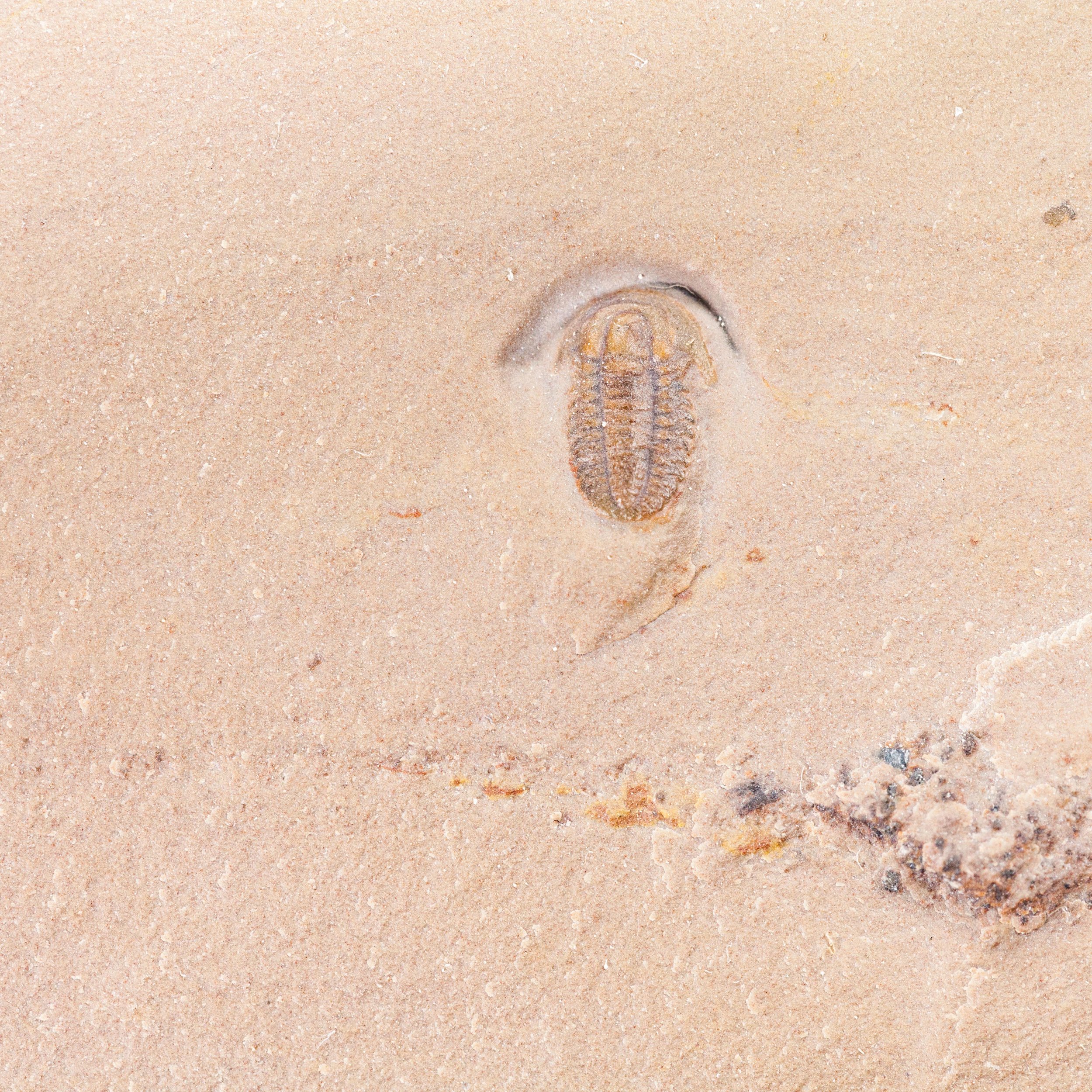 Image 1 of 5
Image 1 of 5

 Image 2 of 5
Image 2 of 5

 Image 3 of 5
Image 3 of 5

 Image 4 of 5
Image 4 of 5

 Image 5 of 5
Image 5 of 5






Triarthrus eatoni
Vendor: Gold Bugs
SKU Number: SQ5248408
A large plate of several Triarthrus eatoni trilobites preserved dorsally, with one smaller ventrally preserved trilobite. This plate is from the famous Late Ordovician, Beecher’s Trilobite Bed, New York.
The larger of the trilobites is unusual in that it is around 4 cm in length. This rare size puts it in the 1 percent of all trilobites from this locality. The trilobites on this plate are associated with branching structures that are also pyritized to the same extent as the trilobites. There is still some debate concerning these structures, although some research has suggested they are early plants or algal in nature.
These trilobites exhibit soft tissue preservation of the antennae, appendages and sometimes eggs. The appendages and antennae on some of these specimens are well defined.
Full dimensions are listed below (The dimensions reflect the size of the largest trilobite).
Vendor: Gold Bugs
SKU Number: SQ5248408
A large plate of several Triarthrus eatoni trilobites preserved dorsally, with one smaller ventrally preserved trilobite. This plate is from the famous Late Ordovician, Beecher’s Trilobite Bed, New York.
The larger of the trilobites is unusual in that it is around 4 cm in length. This rare size puts it in the 1 percent of all trilobites from this locality. The trilobites on this plate are associated with branching structures that are also pyritized to the same extent as the trilobites. There is still some debate concerning these structures, although some research has suggested they are early plants or algal in nature.
These trilobites exhibit soft tissue preservation of the antennae, appendages and sometimes eggs. The appendages and antennae on some of these specimens are well defined.
Full dimensions are listed below (The dimensions reflect the size of the largest trilobite).
Vendor: Gold Bugs
SKU Number: SQ5248408
A large plate of several Triarthrus eatoni trilobites preserved dorsally, with one smaller ventrally preserved trilobite. This plate is from the famous Late Ordovician, Beecher’s Trilobite Bed, New York.
The larger of the trilobites is unusual in that it is around 4 cm in length. This rare size puts it in the 1 percent of all trilobites from this locality. The trilobites on this plate are associated with branching structures that are also pyritized to the same extent as the trilobites. There is still some debate concerning these structures, although some research has suggested they are early plants or algal in nature.
These trilobites exhibit soft tissue preservation of the antennae, appendages and sometimes eggs. The appendages and antennae on some of these specimens are well defined.
Full dimensions are listed below (The dimensions reflect the size of the largest trilobite).
Additional Information
Discovered in 1892 by William S. Valiant and made famous by the work of Charles Emerson Beecher, "Beecher's Trilobite Bed" is located in a small quarry outside of Rome, New York. It is a 4cm thick layer of shale that has yielded some of the most spectacular fossils ever found. The most revered is Triarthrus eatoni, an Upper Ordovician trilobite from the Frankfort Shale of the Lorraine Group. The trilobite bed is a Konservat-Lagerstätte with exceptional soft tissue preservation of antennae, appendages and occasionally egg broods preserved near the underside of the cephalon. There exist only a few sites around the world that preserve this level of detail.
For the last 15+ years the quarry has been owned and managed by Markus Martin, founder of Gold Bugs. Not only is Markus the owner of Gold Bugs, he is the recognized expert on the preparation of fossils from this site.
References:
Charles Emerson Beecher
Triarthrus eatoni
Markus Martin
Gold Bugs
Beecher's Trilobite Bed
















